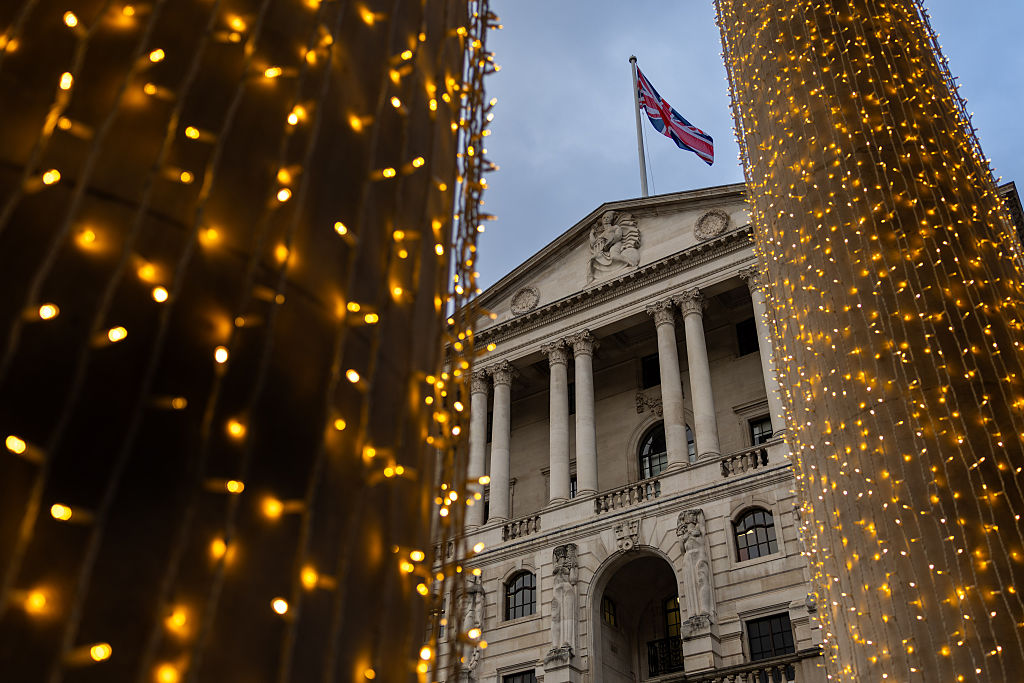What makes the pound in your pocket – or your bank account – money? Why are people willing to accept currency in exchange for goods and services?
These days, there is nothing physical underwriting the value of the pound or the dollar, or any other currency for that matter. Such currencies are popularly known as “fiat” currencies. Put simply, they are backed by the strength of the economies and the governments that issue them and that demand taxes be paid in them.
However, this wasn’t always the case. In the past, commodities of various sorts were often used as money. The most popular such commodities have been the precious metals, and gold in particular.
MoneyWeek
Subscribe to MoneyWeek today and get your first six magazine issues absolutely FREE

Sign up to Money Morning
Don't miss the latest investment and personal finances news, market analysis, plus money-saving tips with our free twice-daily newsletter
Don't miss the latest investment and personal finances news, market analysis, plus money-saving tips with our free twice-daily newsletter
The “gold standard” describes a monetary system where paper currencies are exchangeable for gold at a fixed rate. Put very simply, the idea behind the gold standard is that it prevents countries from living beyond their means. If a country needs to hang on to enough gold to back its currency, then it makes much harder for governments to manipulate the money supply.
However, the rigidity of the gold standard also has drawbacks. An inflexible money supply in theory makes it harder for central banks to adjust for economic conditions. Perhaps more pertinently, history shows that when the gold standard has proved overly restrictive, governments simply abandon it. For example, most countries abandoned the gold standard between the First and Second World Wars.
After the Second World War, the world went back onto a form of the gold standard. Under the Bretton Woods agreement, the US dollar was backed by gold, and the rest of the world’s currencies traded at fixed exchange rates against the dollar.
However, in the late 1960s, mounting US spending – partly on the Vietnam war – threatened to cause a run on America’s gold reserves as foreign countries lined up to swap their dollars for gold.
As a result, in 1971, president Richard Nixon severed the link between the dollar and gold. By 1973, most major currencies were free floating and the US dollar was no longer tied to the yellow metal.
Of course, the monetary system is constantly evolving. As the prospect of fully digital currencies becomes reality, we may see another shift in the near future.
To learn more, subscribe to MoneyWeek magazine.
Get the latest financial news, insights and expert analysis from our award-winning MoneyWeek team, to help you understand what really matters when it comes to your finances.
MoneyWeek is written by a team of experienced and award-winning journalists, plus expert columnists. As well as daily digital news and features, MoneyWeek also publishes a weekly magazine, covering investing and personal finance. From share tips, pensions, gold to practical investment tips - we provide a round-up to help you make money and keep it.
-
 What are my retirement income options?
What are my retirement income options?We’re all told to save into a pension, but there’s widespread confusion about how to take an income from our savings and investments at retirement, a new study has found. We look at your retirement income options.
-
 UK interest rates: will the Bank of England lower rates?
UK interest rates: will the Bank of England lower rates?The Bank of England’s Monetary Policy Committee’s (MPC) final interest rates meeting of the year takes place tomorrow (18 December) and most experts expect a cut
-
 What's behind the big shift in Japanese government bonds?
What's behind the big shift in Japanese government bonds?Rising long-term Japanese government bond yields point to growing nervousness about the future – and not just inflation
-
 Halifax: House price slump continues as prices slide for the sixth consecutive month
Halifax: House price slump continues as prices slide for the sixth consecutive monthUK house prices fell again in September as buyers returned, but the slowdown was not as fast as anticipated, latest Halifax data shows. Where are house prices falling the most?
-
 Rents hit a record high - but is the opportunity for buy-to-let investors still strong?
Rents hit a record high - but is the opportunity for buy-to-let investors still strong?UK rent prices have hit a record high with the average hitting over £1,200 a month says Rightmove. Are there still opportunities in buy-to-let?
-
 Pension savers turn to gold investments
Pension savers turn to gold investmentsInvestors are racing to buy gold to protect their pensions from a stock market correction and high inflation, experts say
-
 Where to find the best returns from student accommodation
Where to find the best returns from student accommodationStudent accommodation can be a lucrative investment if you know where to look.
-
 The world’s best bargain stocks
The world’s best bargain stocksSearching for bargain stocks with Alec Cutler of the Orbis Global Balanced Fund, who tells Andrew Van Sickle which sectors are being overlooked.
-
 Revealed: the cheapest cities to own a home in Britain
Revealed: the cheapest cities to own a home in BritainNew research reveals the cheapest cities to own a home, taking account of mortgage payments, utility bills and council tax
-
 UK recession: How to protect your portfolio
UK recession: How to protect your portfolioAs the UK recession is confirmed, we look at ways to protect your wealth.


